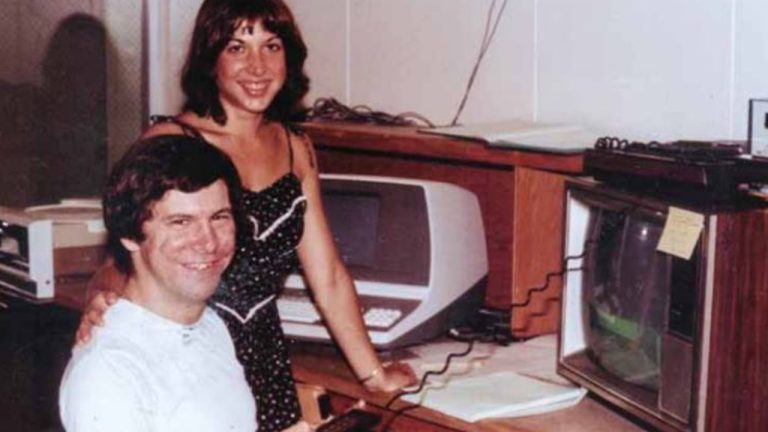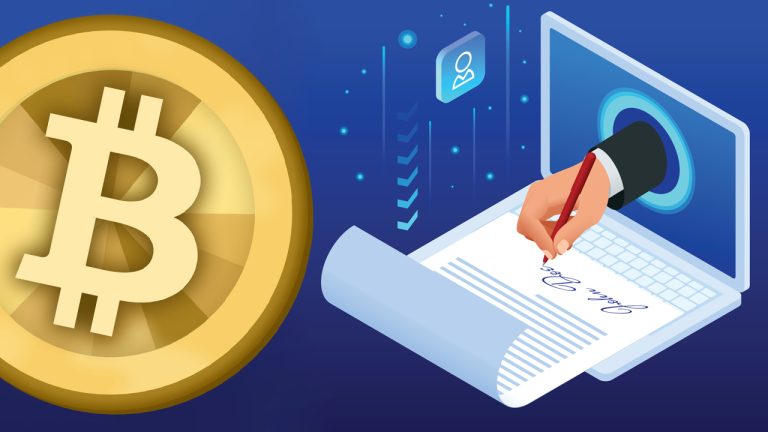 At the end of November, an unknown person signed a signature tied to an extremely old block reward mined on Jan. 19, 2009, and the user published a message and verified signature linked to the reward on the forum bitcointalk.org. The message was tied to a bitcoin address associated with block 1,018, a block reward […]
At the end of November, an unknown person signed a signature tied to an extremely old block reward mined on Jan. 19, 2009, and the user published a message and verified signature linked to the reward on the forum bitcointalk.org. The message was tied to a bitcoin address associated with block 1,018, a block reward […] On Dec. 9, 2022, Twitter’s owner Elon Musk told the public that the social media company plans to purge 1.5 billion accounts. Musk further added that the deletions would be obvious accounts that have no tweets or they haven’t logged in for years. However, after Musk announced this plan, a great number of cryptocurrency proponents […]
On Dec. 9, 2022, Twitter’s owner Elon Musk told the public that the social media company plans to purge 1.5 billion accounts. Musk further added that the deletions would be obvious accounts that have no tweets or they haven’t logged in for years. However, after Musk announced this plan, a great number of cryptocurrency proponents […] On Nov. 15, 2022, a post was created on the forum website bitcointalk.org and the thread’s creator asked people to share signatures tied to some of their oldest mined bitcoin blocks. 11 days later, a newly created bitcointalk.org profile, called “Onesignature,” shared a signed message tethered to an extremely old block reward created on Jan. […]
On Nov. 15, 2022, a post was created on the forum website bitcointalk.org and the thread’s creator asked people to share signatures tied to some of their oldest mined bitcoin blocks. 11 days later, a newly created bitcointalk.org profile, called “Onesignature,” shared a signed message tethered to an extremely old block reward created on Jan. […] On October 7, 2022, a bitcoin supporter named Jim Blasko explained that he discovered the oldest upload of Bitcoin’s version 0.1 codebase. The original code was thought to have been lost for more than a decade and with a “little browser hacking” Blasko was able to find the lost version 0.1 raw data and files […]
On October 7, 2022, a bitcoin supporter named Jim Blasko explained that he discovered the oldest upload of Bitcoin’s version 0.1 codebase. The original code was thought to have been lost for more than a decade and with a “little browser hacking” Blasko was able to find the lost version 0.1 raw data and files […]
Hal Finney, a computer scientist and the world’s first publicly known Bitcoiner, would have celebrated his 66th birthday today.
Finney was also the first person to publicly run Bitcoin (BTC), going down in the annals of crypto Twitter history with a famous tweet that often resurfaces:
Raise a glass to the world’s first Bitcoiner today. Hal Finney, the first person to receive a Bitcoin transaction from none other than Satoshi Nakamoto would have celebrated his birthday today.
Running bitcoin
— halfin (@halfin) January 11, 2009
On Bitcointalk.org, Hal Finney explained that when Satoshi first released the software, he “grabbed it right away.”
“I think I was the first person besides Satoshi to run bitcoin. I mined block 70-something, and I was the recipient of the first bitcoin transaction, when Satoshi sent ten coins to me as a test.”
The wallet address for the 10 Bitcoin transaction tells a story: surging to 10 Bitcoin in value in 2009 (roughly $400,000 in today’s terms), but before Bitcoin had a dollar-denominated value.

For Pete Rizzo, editor at Kraken and Bitcoin magazine, Finney was a “visionary”:
✨ Today is Hal Finney’s 66th birthday. RIP to a true legend — the recipient of the first #Bitcoin transaction and a visionary who embraced its invention when others wouldn’t dare pic.twitter.com/rKNJ0m3ftI
— RIZZO (@pete_rizzo_) May 4, 2022
Finney sadly passed away from Amyotrophic lateral sclerosis (ALS), also known as motor neuron disease, in Phoenix in 2014. However, an eternal technologist, he was cryopreserved by the Alcor Life Extension Foundation and may be brought back to life via a technological medium in the future.
Prior to the diagnosis of the debilitating illness, Finney was known for more than just running Bitcoin: he ran half-marathons up until September 6th, 2009.
Happy Birthday to the one and only Hal Finney!!
— PU₿LORD (@publordhodl) May 4, 2022
Your spirit shall always live on...@halfin@franfinney pic.twitter.com/GHkODO8sqM
As a part of his legacy, many Bitcoin foundations and charities organize running events including “Running Bitcoin” to fight ALS.
Related: ‘How I met Satoshi’: The mission to teach 100M people about Bitcoin by 2030
For some Bitcoin supporters, it’s a time to look back on his life and celebrate his achievements. But in typical Bitcoin Twitter fashion, it’s also an opportunity to make light of the situation:
Just imagine what we could have done with a Full Inney
— Bitcoin Lebowski (@DudeJLebowski) May 4, 2022

At the time the first BTC was sent, there wasn’t even a cash value associated with the crypto asset, compared to the more than $43,000 it is on Wednesday, Jan. 12.
It’s been exactly 13 years to the day since computer scientist Hal Finney became the recipient of the first transaction on the Bitcoin blockchain from creator Satoshi Nakamoto.
On Jan. 12, 2009, with the Bitcoin (BTC) white paper a mere three months old, Satoshi sent Finney 10 BTC — worth next to nothing at the time, but now roughly $440,000. The move, likely a test to determine the viability of the blockchain, was the first in a series of hundreds of millions of transactions in Bitcoin between millions of people across the world.
“When Satoshi announced the first release of the software, I grabbed it right away,” said Finney in a 2013 post on Bitcointalk.org. “I think I was the first person besides Satoshi to run Bitcoin. I mined block 70-something, and I was the recipient of the first bitcoin transaction when Satoshi sent ten coins to me as a test. I carried on an email conversation with Satoshi over the next few days, mostly me reporting bugs and him fixing them.”
Running bitcoin
— halfin (@halfin) January 11, 2009
Finney was one of the first people to respond to Satoshi’s post on the cypherpunks mailing list, with many in the space still believing he was one of the pseudonymous individuals behind the creation of Bitcoin. Sadly, the legendary crypto pioneer passed away from amyotrophic lateral sclerosis — ALS, also known as Lou Gehrig's disease — in 2014. He would have been 65 years old in 2022.
At the time the first BTC was sent, there wasn’t even a cash value associated with the crypto asset, whose blockchain has accrued more than 701 million transactions as of Jan. 8. One of the most famous early use cases — exchanging 10,000 BTC for two pizzas in 2010 — helped pave the way for the crypto asset to eventually be accepted in many bars, restaurants and even as legal tender in the entire country of El Salvador.
Related: Former patrons can't drown sorrows as first-ever bar to accept Bitcoin closes
Thirteen years ago, Bitcoin and crypto were highly experimental, unproven and largely unknown. Today, regulators across the world discuss how to handle the integration of central bank digital currencies, stablecoins and digital assets into their financial systems.
In 2035, thirteen years from now, the BTC blockchain will likely still have plenty of blocks to mine. Some experts are predicting the price of the crypto asset will hit $100,000 in 2022, with the potential for even more growth n the years to come.
 13 years ago today, the anonymous creator of the Bitcoin protocol kickstarted the network by mining the genesis block. Satoshi started the genesis block on Saturday, January 3, 2009, at precisely 1:15 p.m. (EST), and since then more than 700,000 blocks have been mined into existence. Kickstarting the Bitcoin Network Today, bitcoiners and cryptocurrency advocates […]
13 years ago today, the anonymous creator of the Bitcoin protocol kickstarted the network by mining the genesis block. Satoshi started the genesis block on Saturday, January 3, 2009, at precisely 1:15 p.m. (EST), and since then more than 700,000 blocks have been mined into existence. Kickstarting the Bitcoin Network Today, bitcoiners and cryptocurrency advocates […] On January 3, 2022, the Bitcoin network will be celebrating its 13th year of life after its creator Satoshi Nakamoto kick-started the protocol. The creator of Bitcoin has always been the community’s most famous and mysterious character. Roughly ten years ago, Satoshi logged off, never to return and it’s very likely the inventor won’t ever […]
On January 3, 2022, the Bitcoin network will be celebrating its 13th year of life after its creator Satoshi Nakamoto kick-started the protocol. The creator of Bitcoin has always been the community’s most famous and mysterious character. Roughly ten years ago, Satoshi logged off, never to return and it’s very likely the inventor won’t ever […]
Block after block, Bitcoin highlights the power of programmable monetary policy even as calls for its death grow louder.
Bitcoin (BTC) miners officially produced their 700,000th block on Sept. 11, marking a major milestone for a network whose detractors claim it has died 428 times since 2009.
It took Bitcoin less than two years to produce 100,000 more blocks after reaching the 600,000 milestone on Oct. 18, 2019. At the time of the last 100,000-block milestone, the BTC price was worth less than $8,000. Today, one Bitcoin is worth over $45,500.
Happy 700000th block, #bitcoin! https://t.co/24mpVKXK8e
— Pieter Wuille (@pwuille) September 11, 2021
At the time of writing, Bitcoin’s total supply was 18,812,806, or 89.5% of all the coins that will ever be produced. On average, new blocks are generated every ten minutes, though production time is impacted by mining difficulty. Bitcoin’s mining difficulty is adjusted roughly every two weeks, a process that resets how hard it is for miners to mine the digital asset. At the current pace of block production, the final Bitcoin will be mined around the year 2140.
Crypto Twitter celebrated the milestone by quoting the late Hal Finney, one of Bitcoin’s early pioneers and a prime candidate for being Satoshi Nakamoto, the pseudonymous creator of the technology. Finney passed away from amyotrophic lateral sclerosis, or ALS, in 2014.
The 700,000th #Bitcoin block.
— Documenting Bitcoin (@DocumentingBTC) September 11, 2021
"Every day that goes by and #Bitcoin hasn't collapsed due to legal or technical problems, that brings new information to the market. It increases the chance of #Bitcoin's eventual success and justifies a higher price."
— Hal Finney pic.twitter.com/RYzHHBodTe
Bitcoin was programmed to be a self-regulating market with hard coded monetary policy that does not depend on any outside parties. Unlike the United States Federal Reserve, for example, which can affect the size and growth rate of the money supply at will, Bitcoin maintains a hard cap on supply and cannot be created without the massive energy input of miners.
While Bitcoin has invited attacks over its environmental footprint, the network’s energy usage is a tiny fraction of total energy consumption. Efforts to incorporate clean energy into the mining process have largely proven to be successful, with some estimates claiming that Bitcoin mining in the United States is more than 50% powered by renewable energy.
#Bitcoin energy usage is cleaner than every major industry and represents a rounding error in total energy consumption. @FriarHass delivers a comprehensive analysis worth reading.https://t.co/9RSH8t5Z1U
— Michael Saylor⚡️ (@michael_saylor) August 11, 2021
Related: Blockstream and Macquarie Group launch Bitcoin mining pilot program
Thanks to Bitcoin, cryptocurrencies have grown to become a more than $2 trillion asset class. Bitcoin’s share of the overall market is 41%, or $857 billion, at the time of writing.
 The creator of the world’s first successful blockchain network has been an enigma ever since the mysterious inventor released the white paper over 12 years ago. Interestingly, Satoshi Nakamoto worked on the Bitcoin project publicly for 25 months and 13 days, all while being able to remain completely anonymous. What the Public Knows About Satoshi […]
The creator of the world’s first successful blockchain network has been an enigma ever since the mysterious inventor released the white paper over 12 years ago. Interestingly, Satoshi Nakamoto worked on the Bitcoin project publicly for 25 months and 13 days, all while being able to remain completely anonymous. What the Public Knows About Satoshi […]